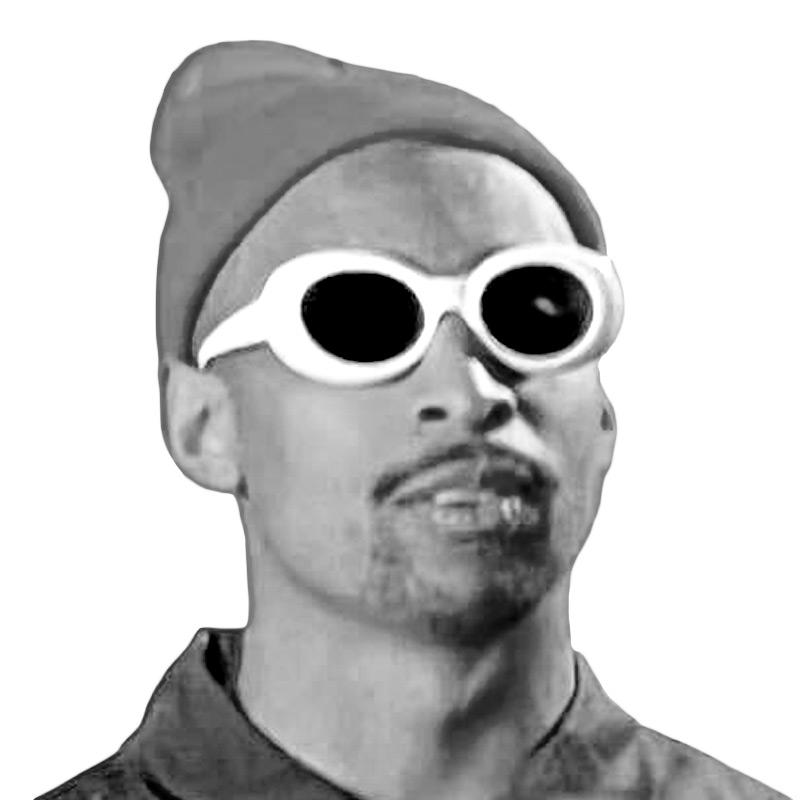The show in Barclays Center starts when Stephen Curry emerges from the east tunnel 72 minutes before a Monday evening matchup against the Brooklyn Nets. His ensuing warm-up, which has famously become a spectacle over Curry’s 15-year career, brings the lower bowl’s activity to a screeching halt. As Curry twirls left- and right-handed layups alongside Warriors assistant Bruce Fraser, kids, their parents, and everyone in between meander toward the court, transfixed. Five minutes later, Klay Thompson arrives from the same tunnel to a similar reception, looking to shake out of a recent shooting slump. Eventually, Draymond Green appears, completing the Beatles-like exhibition. By tipoff, coach Steve Kerr will join the trio as he attempts to guide the Warriors out of their recent stretch of mediocrity.
For the past decade, that foursome has been the NBA’s most decorated touring act. Thirteen months after Kerr was hired in the spring of 2014, the Warriors brought the Larry O’Brien Trophy back to the Bay for the first time in 40 years. In 2016, they set an NBA record with 73 regular-season wins and then recruited Kevin Durant in free agency and reeled off two more titles. Two years ago, with Durant out of the picture, this same quartet led the Warriors to 53 wins and an improbable title—their fourth in eight years—cementing their spot in the league’s dynastic lore.
This season, however, has steered Golden State in a different direction. Four straight wins have helped the Warriors rediscover some momentum, but they are just 25-25 overall, 10th in the Western Conference. A succession of bad losses and inconsistent play has thrown the limitations of this roster into stark relief and brought this proud dynasty face-to-face with its mortality.
Andrew Wiggins, perhaps the Warriors’ second-most important player during the 2022 Finals, has looked like a shell of himself. Chris Paul, acquired last summer for Jordan Poole, has missed the team’s past 15 games after hand surgery. Before Jonathan Kuminga emerged as a potential franchise cornerstone, he was complaining publicly and privately about playing time. Green has been in and out of the lineup serving suspensions for reckless on-court behavior. And Thompson’s devolving skill set has the team reassessing his role on the roster.
Off the floor, the Warriors are still grieving the death of assistant coach Dejan “Deki” Milojevic, who collapsed suddenly during a team dinner last month in Salt Lake City and died of a heart attack the following afternoon.
“Every year has different challenges,” Curry tells me. “This one’s been a lot of stuff that’s kind of uncontrollable. Hits to the family that kind of rocked us, for sure: the tragedy with Deki and all that; injuries; and then with the tease of how the season started, thinking that we had an identity and all that, and we obviously haven’t. So it’s been a challenge for sure, but that’s part of being in this league, honestly. We have, at the core of the team, standards that we have, so just got to embrace it.”
As Golden State approached last week’s trade deadline, many around the league wondered how aggressive the front office would be in trying to rescue this team. Nearly every Warrior has seen their name in trade rumors at some point this season. Would the Warriors move on from Green or Thompson to reconfigure the roster around Curry? Would this deadline mark the official end of the Warriors’ two-timeline plan, in an effort to load up with win-now veterans? Would another team talk itself into trading for Wiggins? If this season represented the end of the Warriors as we know them, then the deadline represented the opportunity to pivot to whatever’s next.
Perhaps it’s unsurprising that Golden State stood pat, opting to double down on its Hall of Fame quartet and its belief that those four belong together. Whenever the Warriors have found themselves in a bind, the organization has turned toward Curry, Green, Thompson, and Kerr. This roster has its work cut out for it, both this year and beyond. But wherever that path leads, the core characters would like to see it through together.
“The conversation’s been—since I got drafted, then Klay and Draymond, since ’15 when we won, until this last one—it’s always been about us trying to figure out the different groups and different supporting cast and the different challenges around us,” Curry says. “And we’ve built this culture, obviously with Steve and Mark Jackson. This is a story that’s still kind of unfolding, and it’s important that we see it all the way through until it’s proven that we can’t win.”
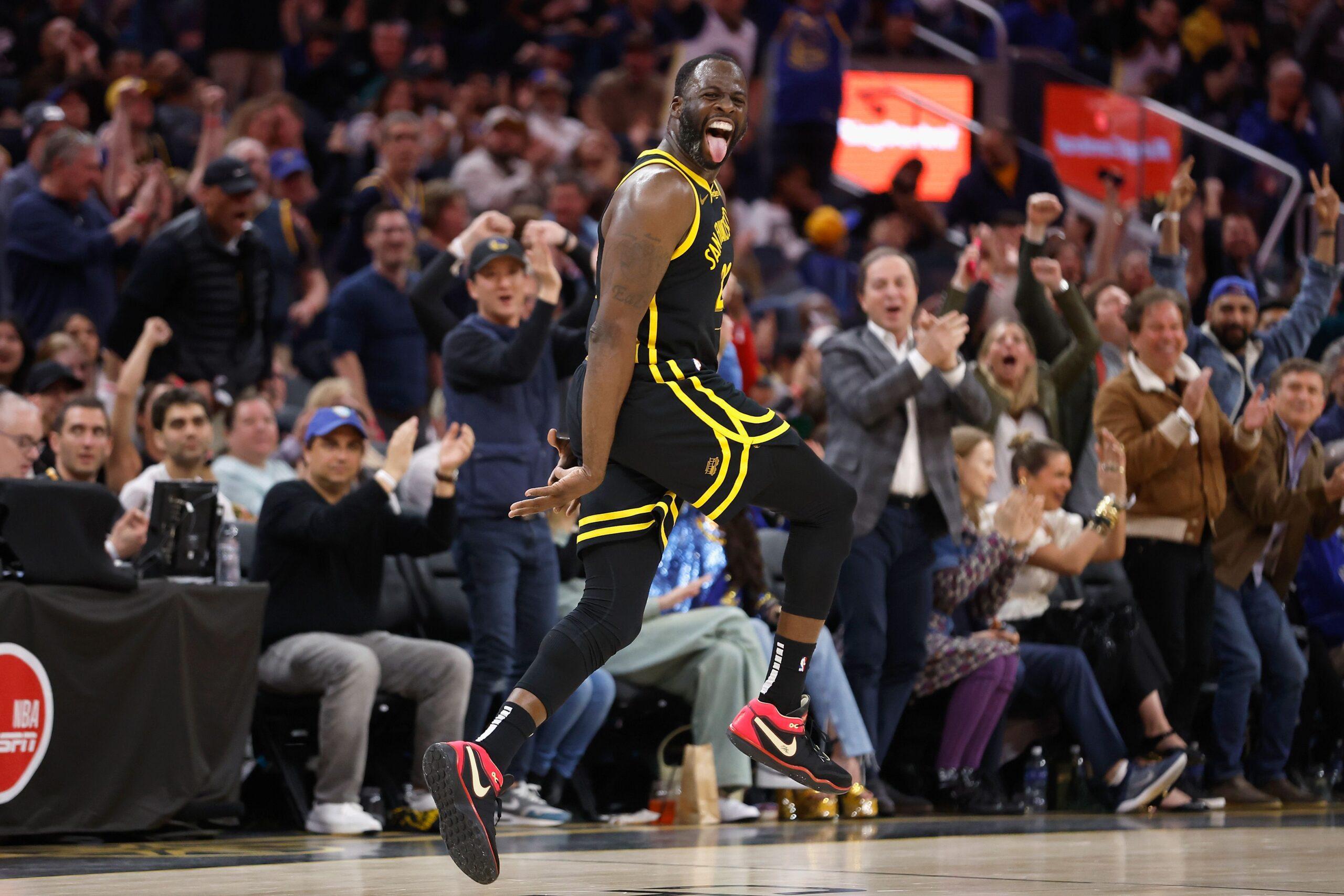
Two nights later, in Philadelphia, Green has a bone to pick with referee Leon Wood. After being called for a foul during a battle for a rebound, Green charges toward the veteran official to plead his case, which is repeatedly ignored. Green, defeated and about to be subbed out, eventually gives up, murmuring “bum ass” as he heads to the bench.
Since his return from a 16-game suspension, Green has teetered on this tightrope of keeping the fiery edge that drives the team while not letting it bring him down. Earlier this season, Green was suspended five games for putting Rudy Gobert into a choke hold. A few weeks later, the NBA suspended him indefinitely and mandated that he seek counseling after he struck Suns center Jusuf Nurkic in the face.
We’ve built a chemistry and an expectation of: When we’re locked in, we win. And that doesn’t go away as quick as people might think.Stephen Curry
Without Green, Curry’s scoring numbers dipped, as he shot just 41 percent from the floor. Defensively, Golden State lost its anchor, the player tasked with calling out rotations, filling in gaps, and lifting the team’s energy.
But even during his absence, Green made his presence felt with the team, frequently reaching out to the team’s next generation. He told Kuminga all the time that “No one can stop you with the ball!” When rookie Brandin Podziemski missed a crucial 3-pointer against the Lakers last month, Green provided reassurance. “He’s like, ‘You shoot that every time,’” Podziemski says. “‘I have the most confidence in you that you’re going to make that.’”
Green’s mentorship has made him beloved in the Warriors locker room, and his leadership is why Golden State has skirted severe punishment for the mercurial forward over the years. The Warriors have long maintained that Green’s edge is critical to the team’s identity, but his recent indefinite suspension has shifted the longtime dynamic. Green’s leaguewide reputation needs repair after this year’s behavior and 2022’s punch of Poole, and the Warriors can’t afford to lose him again as they try to climb up the Western standings. Going forward, Green knows he needs to contain his emotions for the betterment of his team.
“I think the biggest thing he talked about is that he knew this is the ultimatum because this is his last real chance to be the player that he wants to be,” Curry tells me. “It don’t matter what anybody else says, it’s him. And it’s just a level of awareness of things needed to change.”
Throughout the years, Curry has been Green’s biggest advocate, routinely vetoing any idea that the Warriors should part ways with Green. Curry has stood by Green and worked with him through his outbursts, even as his behavior has sparked conflict within the team. And in the face of the biggest test of his career, Curry believes Green’s presence will once again bear fruit.
“We’ve built a chemistry and an expectation of: When we’re locked in, we win,” Curry tells me. “And that doesn’t go away as quick as people might think.”
Curry knows the Warriors have their issues, but he trusts in their ability to move through them.
“Let’s put it this way,” he adds. “We’re in the stage that everybody has the answer. And everybody has a perspective that they think is right. … We just happen to live it in front of everybody. You know our strengths, weaknesses, successes, failures. But that’s not something you just move on from as quick as people might want or think is right.”
In the past two weeks, Green has helped give Golden State hope that it can mount a run. Since his return to the starting lineup, the defense has posted a 108.4 defensive rating, Curry’s numbers are back up, and, most importantly, the team’s swagger is back. In Philly, as the Warriors built up a 30-point lead in the second half, Green looked as comfortable as ever enjoying the spoils of victory with his teammates.
“He’d go to war with us all of the time,” teammate Kevon Looney says of Green. “He didn’t do nothing to us. It wasn’t like he had to apologize to us. It was something he needed to figure out, but we didn’t want him to leave in the first place.
“So when he came back, we was more than happy to see him, and we missed his energy. Since he’s been back, I think you can see a big difference in our team and our energy.”
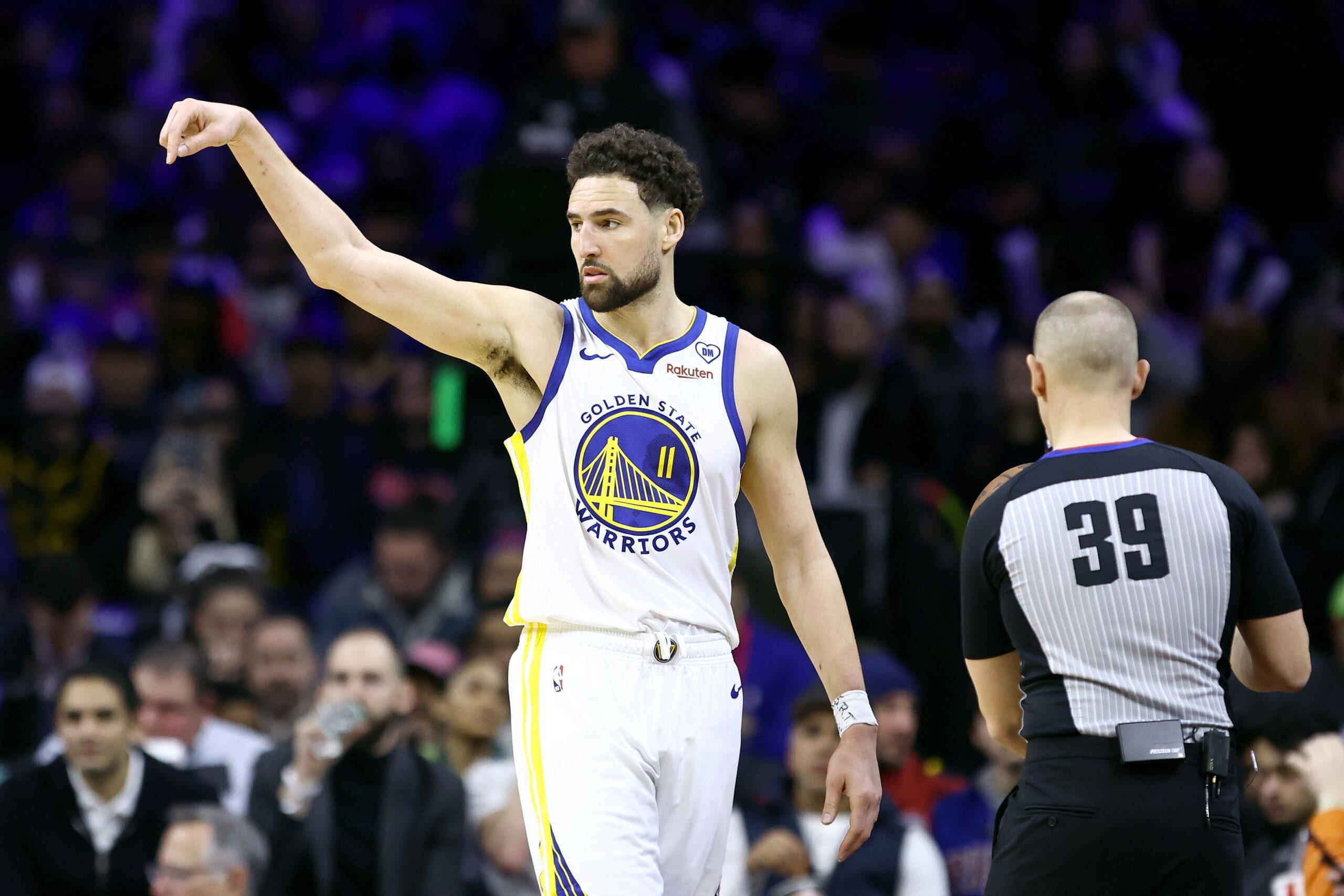
Later that evening, Thompson sits near his locker after a bounce-back performance in which he scored 18 points and hit four of five 3s.
“It’s been up and down,” Thompson tells me of his season, looking straight ahead with an intense gaze. “But I’ve kind of had a revelation over the past few days that despite the shooting numbers or the inconsistent play, I deserve to have fun, and I deserve to play with swagger.”
Golden State’s recent East Coast swing wasn’t kind to Thompson. In a 141-134 loss to Atlanta, he shot a dismal 4-of-19 as Curry exploded for 60 points. Two nights later in Brooklyn, Thompson was benched in the final minutes of a 109-98 win, prompting a candid media session shortly after the buzzer.
“Yeah, you kidding me?” he told reporters when asked about the adjustment to his role. “To go from one of the best players …” he said before trailing off. “It’s hard for anybody. I’ll be honest with you. It’s really hard.”
Thompson still authors occasional shooting performances that evoke the joy of yesteryear, but surgeries to his ACL and Achilles are starting to catch up to him. He’s no longer capable of neutralizing opposing wings on defense, and his eroding athleticism has been exacerbated by frequent shooting droughts. In his past 10 appearances, he’s converted just 32 percent of his 3-pointers.
I’ve kind of had a revelation over the past few days that despite the shooting numbers or the inconsistent play, I deserve to have fun, and I deserve to play with swagger.Klay Thompson
This quandary has put Kerr in a bind and occasionally forced the coach to go away from Thompson in crucial moments. Against Brooklyn, Kerr went with rookie Gui Santos down the stretch as Thompson watched from the bench with ice bags on his knees, a visual that could foreshadow the rest of his time in Golden State, should he return next year. Thompson will be a free agent after this season; he turned down a multiyear extension last summer, opting instead to bet on himself for a bigger payday after this season. But as he struggles and the youngest Warriors solidify their places in the rotation, it’s unclear what Klay’s next contract—or role—will look like. But Thompson says he’s open to a reduced role if it means staying with the only franchise he’s suited up for.
“Yeah, there’s nothing wrong with that,” he tells me. “I’ll be 35 next year. At 35, coming off the ACL and an Achilles [tear] and still have the ability to be a really good player. Maybe not the guy who scored 60 in three quarters and scored an NBA-record 37 points in a quarter, but still a great threat out there. I’ve modeled my game after Reggie [Miller] and Ray [Allen], and those guys were incredibly effective until their late 30s. So I plan on kind of following that mold.”
A new deal this summer would continue Thompson’s partnership with Green, Curry, and Kerr. And even if that means his offensive responsibility will be diminished, that’s a small price to pay to compete alongside the guys he came up with.
“I mean, just for where we started,” Thompson says. “The Warriors before we got there had a good history as far as Wilt and Rick Barry and TMC and We Believe. I think we elevated that to another level. I just think it’s a special, special group, and then when we win and go to so many championships together ... it’s like a bond for life. It’s probably the best part of the job, honestly. Trumps the money, trumps the fame, just being able to have a bond for life with those guys.”
And on nights like Wednesday, it’s evident how much Thompson still relishes being a part of this team.
“I put in so much work to get back to even just playing basketball that I just needed a little perspective shift and rather than trying to be the old me or be an All-Star in the NBA or whatever,” he says. “Just to be as effective as I can in my current role and, most importantly, just have fun, man, because at the end of the day, I only have so many years more doing this and got to have fun. I can’t be stressed because things don’t go my way. I just got to continue to have fun. I thought I did a good job of that tonight.”
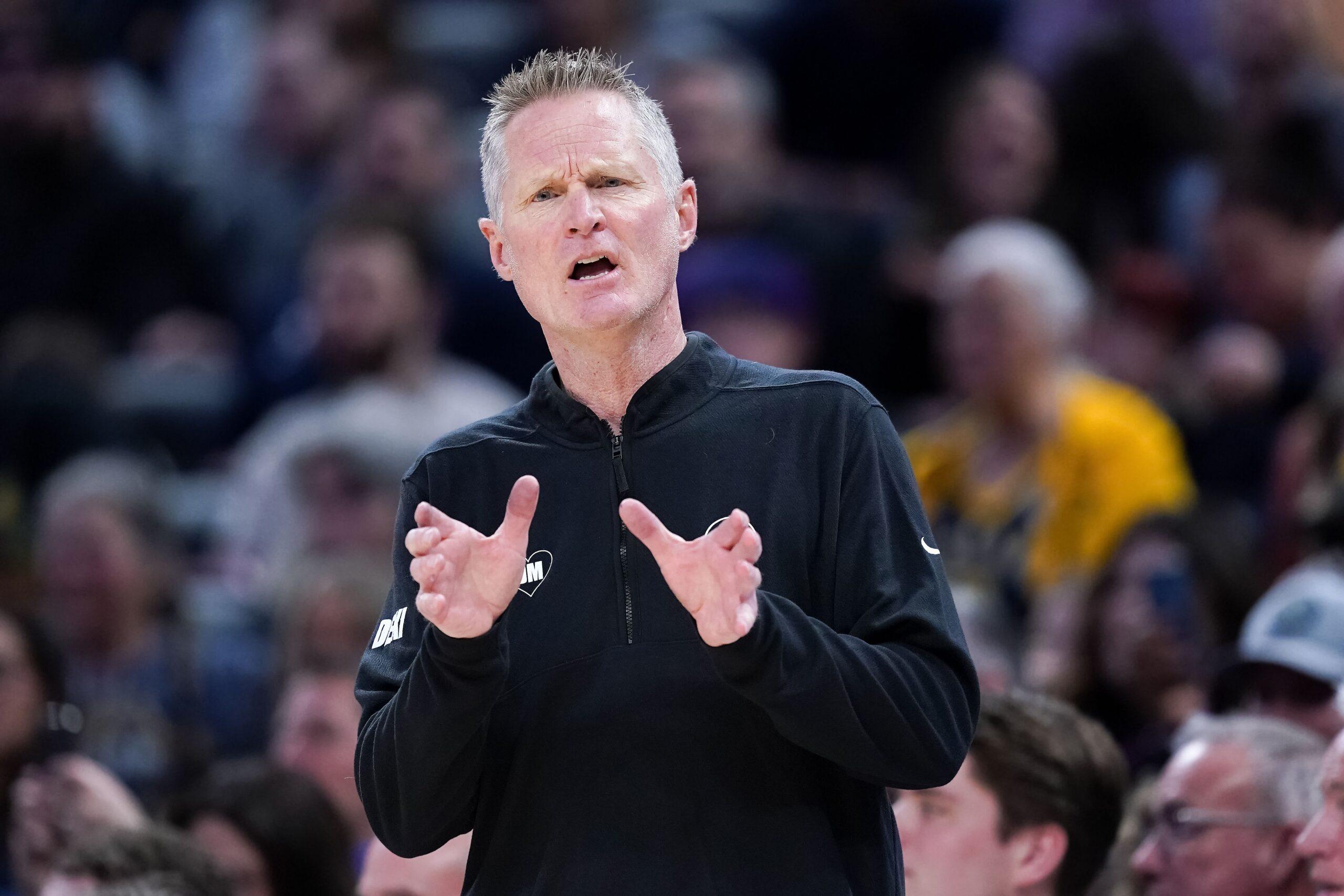
On the eve of the trade deadline, as the Warriors are getting ready to head to Indiana, Kerr is gushing about his below-.500 team.
“I feel like this group can do something special,” he tells reporters. “I really do. So if we don’t do anything tomorrow, we feel like we have a good group we can push with.”
I want to be back. I’ve made that clear every time I’ve been asked about it. The only thing I won’t talk about is just any detail of contract stuff, but I’ve been very open. I want to come back. Joe [Lacob has] told me he wants me back, so I think I’ll be back.Steve Kerr
When Golden State hired Kerr in 2014, Thompson, Green, and Curry were on the cusp of finding themselves, and Kerr helped them find an identity. Curry blossomed into a star, winning back-to-back MVPs and spearheading a 3-point revolution. Thompson became one of the best two-way guards in the league, and Green’s do-it-all defensive acumen and superior offensive intellect brought it all together. When Durant arrived in the Bay, Kerr oversaw a near-seamless transition, and after Durant left in 2019, Kerr guided the Warriors’ return to the mountaintop.
But following the departure of general manager Bob Myers last spring, some within the Warriors feared this season would be Kerr’s last. He’s in the final year of his contract, and the fact that Kerr hasn’t agreed to an extension has brought uncertainty about whether he’ll continue with the team, a notion Kerr dispels.
“I want to be back,” Kerr tells me. “I’ve made that clear every time I’ve been asked about it. The only thing I won’t talk about is just any detail of contract stuff, but I’ve been very open. I want to come back. Joe [Lacob has] told me he wants me back, so I think I’ll be back.”
Throughout his tenure, Kerr has built a culture around winning and vibes. “It’s fun being a Warrior,” Durant told me in the fall, a few days before the season opener against his former team. “It’s fun traveling with the Warriors because it’s a family atmosphere wherever we went. I can have two of my homeboys on a plane with me just because, on a random-ass, one-day road trip. That’s how tight it was.”
However, it has been a tough environment for younger players. Past prospects have struggled to earn Kerr’s trust and find long-term success within the Warriors’ established system. The latest prospect to take his lumps is Kuminga, Golden State’s 21-year-old bridge to the future.
“Just been a lot of ups and downs,” Kuminga tells me of his season. “Even till now it’s just still this going from not doing certain things to doing certain things, and it’s been through a lot of adjustments. And I’m just trying to figure out things. Just a lot of ups and downs and just a lot of adjustments depending on how the team’s playing. We make sure we make some time but just a lot of adjustment and growth.”
When Golden State drafted Kuminga in 2021, the young wing quickly impressed with spurts of athleticism and defensive potential, but his propensity to settle for jump shots and miss box-outs limited his role, as Kerr prioritized winning over on-the-job training. Last season, Kerr slashed Kuminga’s minutes during the Western Conference semifinals loss to the Lakers, opting instead for Wiggins’s experience. Earlier this season, Kerr’s hesitancy to play Kuminga alongside Wiggins, combined with recurring trust issues, again relegated Kuminga to the bench in crucial situations.
“The thing that I tell the coaches on our staff is that we’re now doing the job that the college coaches used to do for us,” Kerr says. “We’re now taking freshmen and sophomores and trying to turn them into juniors and seniors. It is just everybody wants it now. The players want it now. The fans want it now. But until a player really grasps what wins, and that means boxing out ... I mean, it’s all the basic fundamental stuff. But then also knowing who you are as a player. Everybody has to figure out who they are as a player.”
Kuminga’s frustration with his playing time boiled over when the 21-year-old complained to The Athletic about it following a 120-114 Christmas Day loss to the Nuggets. A few days later, Kerr invited Kuminga into his office, heard Kuminga’s frustrations, and made critiques of his own, and an understanding was reached.
The thing that I tell the coaches on our staff is that we’re now doing the job that the college coaches used to do for us. We’re now taking freshmen and sophomores and trying to turn them into juniors and seniors. It is just everybody wants it now. The players want it now. The fans want it now.Kerr
“I understood his frustration because here we are: We had a championship team his first year, and he didn’t play a whole lot,” Kerr tells me. “And then last year he played pretty well, but I didn’t feel like he was ready to play in the Laker series, and I made the decision to play the guys I did. And that was frustrating for him. And I understand the frustration. I was a player. I was frustrated all the time as a player, so I get it. And I never take that stuff personally. And so what I love about JK is he really wants to be out there. And he’s right, he should be out there, but he needed to start doing the things that we’ve been asking him to do, and the last month he’s doing all of them, and it’s great to see.”
Since then, things have started to fall into place for Kuminga, whose ascent has helped the Warriors get back on track. He is averaging 24 points per game over the past month, a stretch that includes some of the best performances of his career, including a 28-point, 10-rebound, three-assist gem against the Nets. Since New Year’s Day, 67 percent of Kuminga’s points have come within 10 feet of the basket, a reflection of the sort of refined shot collection Kerr has been looking for.
“I think there has always been a good communication,” Kuminga tells me of his relationship with Kerr. “It’s just things are clicking faster now than before.”
Kerr has coached the Warriors to unimaginable heights over the past decade. Despite the challenges this season has posed, he’s right where he wants to be and excited for the journey ahead.
“I coach an unbelievable group of guys,” Kerr says. “I love my coaching staff. I love Mike Dunleavy. Mike has been amazing to work with. Joe’s an incredible owner. When you think about what he’s done with his franchise and to have been a part of it with Bob and with Steph and Dray and Klay, it’s amazing. So just because we’re not as good now doesn’t mean I’m going to just jump ship and say, ‘All right guys, see you later.’ I’m not here just for winning championships, I’m here because I love my job. I’m here because I love my players and coaches and love working for the Warriors. So why would I leave?”
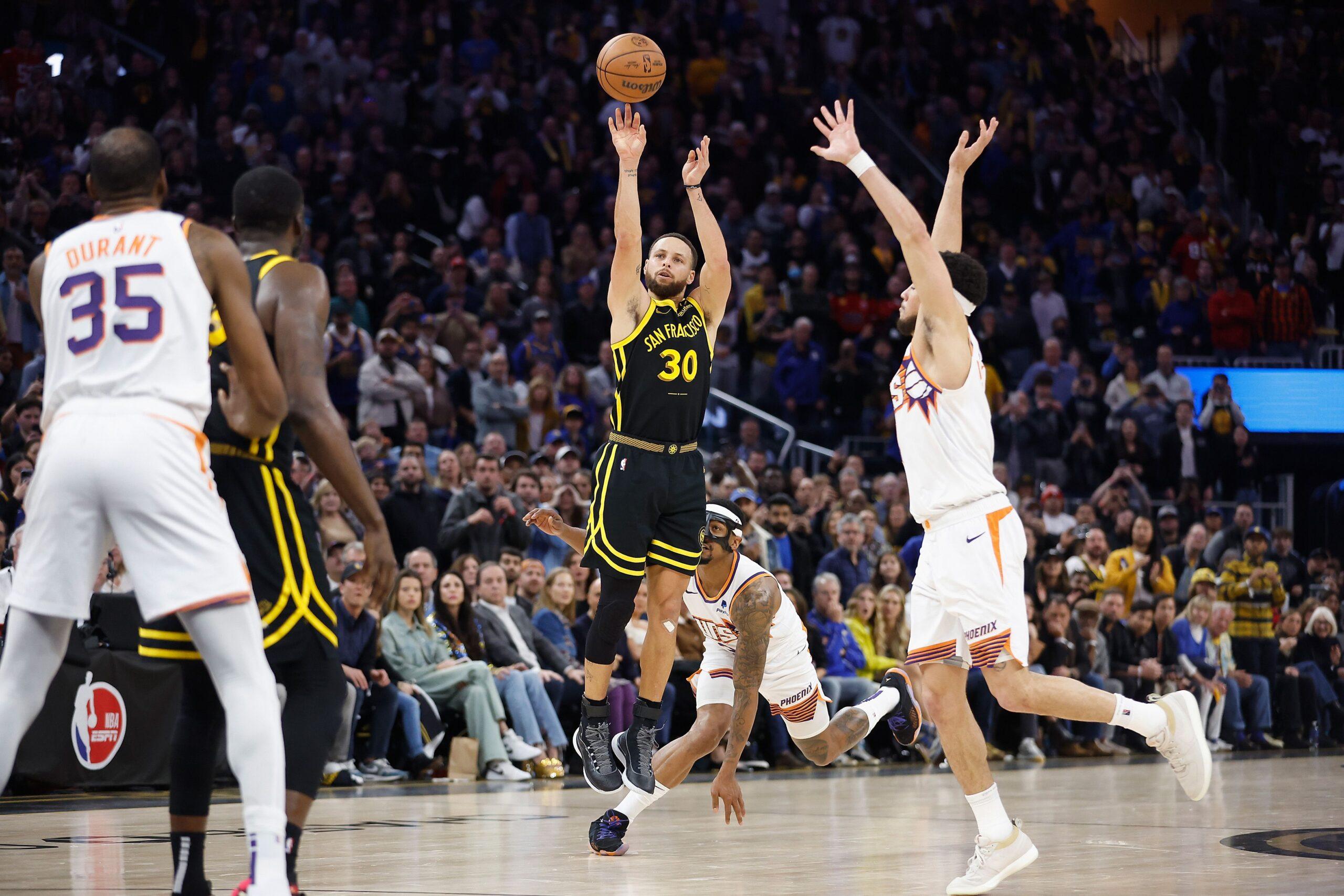
The most successful road trip of the Warriors’ season relied on a similar philosophy to the one that’s powered Golden State’s entire dynastic run: ride Curry’s offensive brilliance and hope for the best.
In five games on the road, Curry averaged 32 points and shot 48 percent from 3, leading the Warriors to a 4-1 record that put the team back in the play-in picture. It’s a far cry from the contending seasons the Warriors are accustomed to, but they’re still holding out hope for another run.
Just because you all don’t know about it doesn’t mean conversations aren’t happening. I’ve been with the same organization for the whole time. So there’s a different dynamic and a different trust level and consistent communication that happens behind the scenes.Curry
“We’re living this out in real time,” Curry tells me. “Season ain’t over. And it’s always been, like when ’22 happened, there was conversations that whole year about it being the last year, you know what I’m saying? So we won. And then last year happened, where we only made it to the second round. It’s like, yeah, we didn’t win a championship, but we were top eight in the teams that had a legit shot.”
The consistent losses have prompted some observers to argue Curry should demand changes to the roster. In a league where superstar players possess great leverage and influence, many wonder why, at age 35, Curry doesn’t apply public pressure on the front office, a perception that Curry believes misses the mark.
“Just because you all don’t know about it doesn’t mean conversations aren’t happening,” Curry tells me. “And also, I’ve been with the same organization for the whole time. So there’s a different dynamic and a different trust level and consistent communication that happens behind the scenes. It’s not like January comes around, it’s the first time we talk about something, and I’m not in the middle of everybody’s perspective. Whether I agree with it or not … there’s a constant communication and constant understanding, from Joe all the way down, what’s going on. And everybody’s allowed to do their job. That’s how I’d put it.”
In a week, Curry will play in his 10th All-Star Game, and he continues to author indelible moments amid a frustrating season. On Saturday, he poured in 30 points against the Suns, including the game-winning 3-pointer, sending his old bud Durant back to the desert with a fresh L and catapulting the Warriors back into the playoff picture.
But around Curry, the NBA landscape has shifted. The defending champion Nuggets are now the favorites out West, while young, dynamic teams in Oklahoma City and Minnesota threaten to shut the door on Golden State. Veteran teams like the Clippers, Suns, and even the Lakers—who eliminated them from last year’s playoffs—would be favored over Golden State in any postseason series.
The Warriors’ future is uncertain no matter how the season ends. Thompson and Paul can be free agents, Wiggins could again find himself in trade rumors, and the team will need to find the right balance between its up-and-comers and veterans. But Curry isn’t worried about all that right now.
“That’s not my job, and it’s not really fair for our team to have to answer those questions while we’re still trying to figure it out,” he says. “There’s going to be a time where in the summer, next year, these are always going to be pressing questions. But it’s not fair for us to have to answer it in real time when we’re trying to figure it out in real time.”
Still, if Curry had it his way, he’d like to win with the guys he built this with. “In a perfect world, we all finish this thing the way we deserve to finish. Whether that’s winning or not, you can’t control that,” he says.
Then Curry takes a beat and succumbs to the realization that this wish may also be out of his hands.
“But there’s no such thing as a perfect ending. You know what I mean? We just don’t know what that is.”

